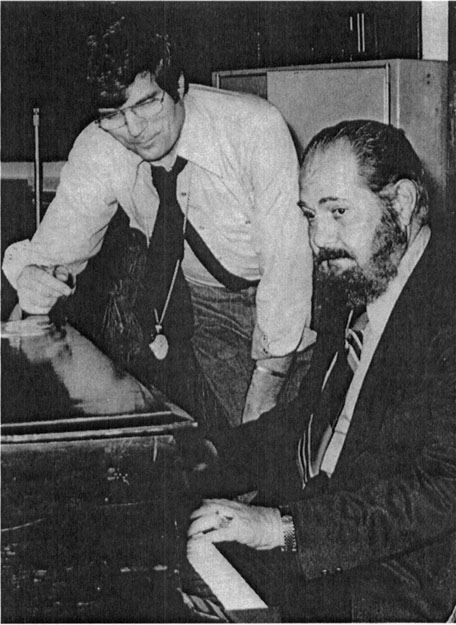
It seems a shame that the name of Johnny Wiggs is so little known even to jazz fans, despite his magnificent recorded achievements and his inestimable part in the revival of authentic jazz in the forties and fifties. Wiggs was one of the very few who were able to teach aspiring kids the art of jazz and was responsible for developing George Girard, Jack Delaney, Pete Fountain, Sam Butera, and many other of the stars that generation produced.
It’s not that nothing has ever been written about him or that he failed to write autobiographical articles which were published. But two considerations, I think, closed the door to world fame for this superlative artist. First, his personality somehow didn’t project well to the public. Second, he deliberately avoided sensational musical devices. For that matter, considerations of showmanship of any kind never entered his head. His clear understanding of jazz as an art form was never approached by any other musician, and he was far and away the finest lead horn that ever performed under my auspices in any medium, live or recorded.
The bare bones of his career are these. His real name was John Wigginton Hyman. He changed his name because it was embarrassing to his family to have a jazz musician in the family. His grandfather was chief justice in Louisiana and his uncle wrote, for Alderman Sidney Story, the ordinance that established Storyville, New Orleans’ notorious legal red-light district.

Jean Christophe Averty is the presiding genius of French TV. He used to be a ragtime piano player and insists I must be one, too. This was taken in his Channel 3 studio in Paris. I was translating a great documentary, “New Orleans Bien Aimée,” into English. Photo by Radio France staff photographer.
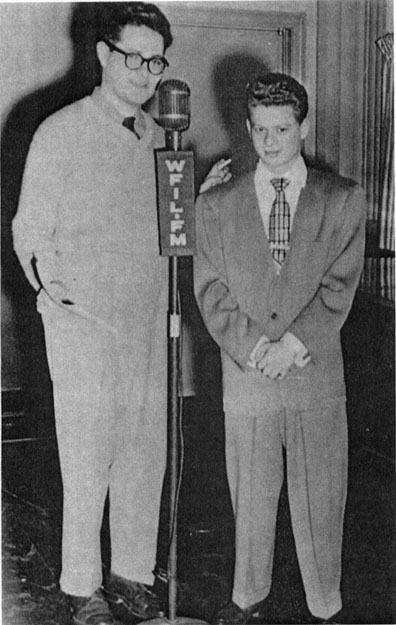
This little fellow had the makings of a super hot trumpet, but Red Rodney cooled off and joined Woody Herman’s Herd in 1948. I couldn’t stop him. Photo by Nick Alexakis.
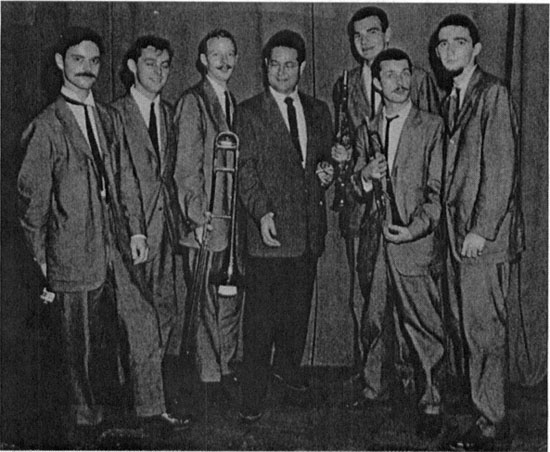
The Dixieland Rhythm Kings do a concert. From left to right are Robin Wet-tereau, Gene Mayl, Charlie Sonnanstine, Al Rose, Ted Belafield, Bob Hodes, and Jack Vastine. Those are matched Brooks Brothers suits made of Italian silk. Top quality. And that’s what these six kids were. Photo by John Kuhlman.
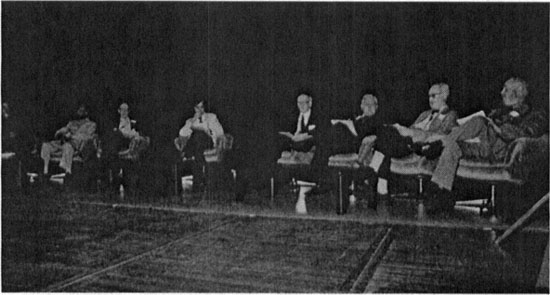
A jazz tribunal examines the life and works of Jelly Roll Morton at the 1983 Tulane Hot Jazz Classic. From left to right are Alan Lomax, Jelly’s biographer; Danny Barker, a living jazz legend; Dr. Lawrence Gushee of the University of Illinois, author of the Smithsonian Institution jazz monographs; moderator John Joyce, professor of jazz studies at Tulane; Dr. William Russell, the dean of jazz historians; Richard B. Allen, coauthor of The Brass Bands; Fred Ramsay, author of Jazzmen; and Al Rose, author of this book and others. Photo by Joe Marcal.
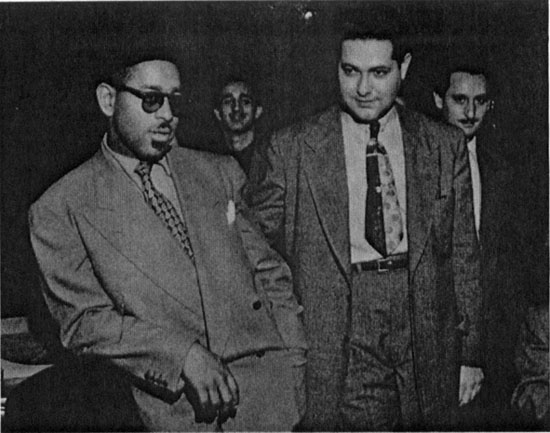
When the world was young and Dizzy hadn’t yet bent his trumpet. Photo by Nick Alexakis.
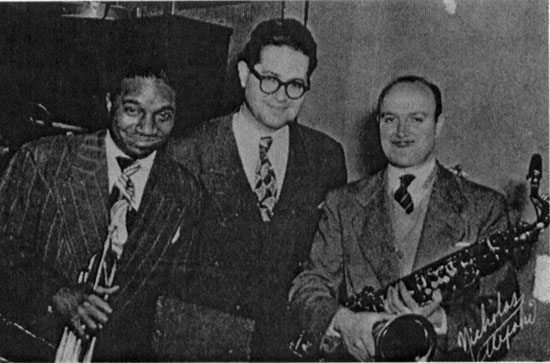
Oran “Hot Lips” Page, left, never knew the tunes, but whatever he played grabbed you. I don’t care what Bud Freeman, right, tells you. I think he looks like a musician. Photo by Nick Alexakis.

The High Society Jazz Band of Paris. The Napoleon in front is Pierre Merlin—artist, comedian, cornetist, and bon vivant. Behind him is the leader, Pierre Atlan, between Diana, rear left, and the lovely piano player, Martine Morel. This was in Deauville in 1976. Photo by Michele Atlan.
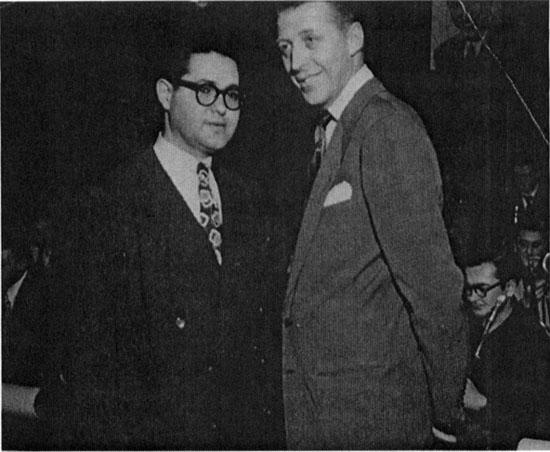
I’m not standing in a hole. I’m six feet one. But Stan Kenton had to be measured in yards. Photo by Nick Alexakis.
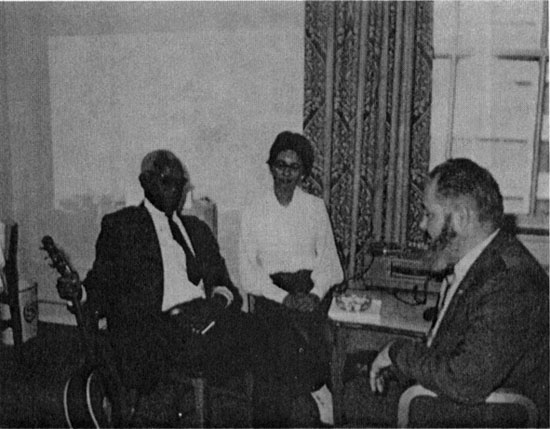
Walter “Furry” Lewis, maestro of the bottleneck guitar, with Betty “Washboard” Redelsheimer, rhythm queen of St. Louis. This was in the Peabody Hotel in Memphis in 1970. Photo by Harry Godwin.
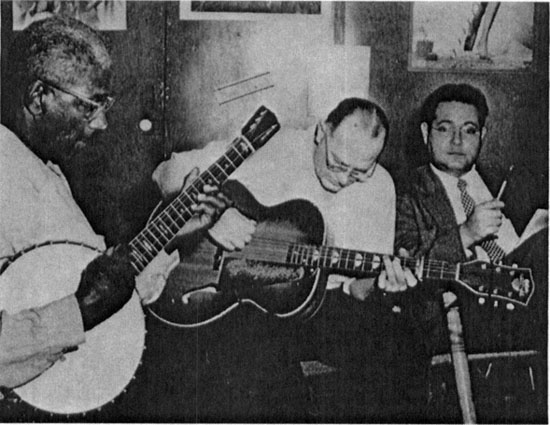
Johnny St. Cyr, nerve center of the Louis Armstrong Hot 5, and Doc Souchon get together on a blues by Al Rose, who tried to keep his cool. Photo by John Kuhlman.

I told him he had a big future as a clarinet player, but Woody Allen, right, keeps saying he doesn’t have time. In the striped shirt is Dr. Henry Blackburn, who plays soprano saxophone and built his own hospital in Minnesota. On the left is Ron Coins, a jazz fan from California. His wife isn’t in the picture so she must have taken it.
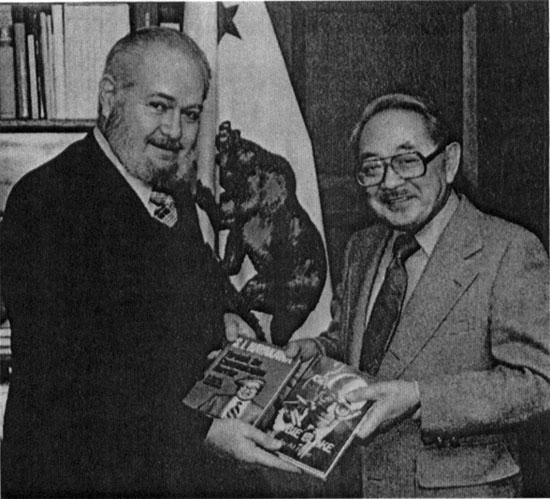
Sam Hayakawa is a first-class ragtime piano player. The senate kept interfering, though. Here we exchange our newly published books in the United States Senate office building. Senate staff photo.

I’d have fired the photographer if I had been entirely out of this picture with Miff Mole, Pee Wee Russell, and Sidney Bechet. Photo by Harry Romm.
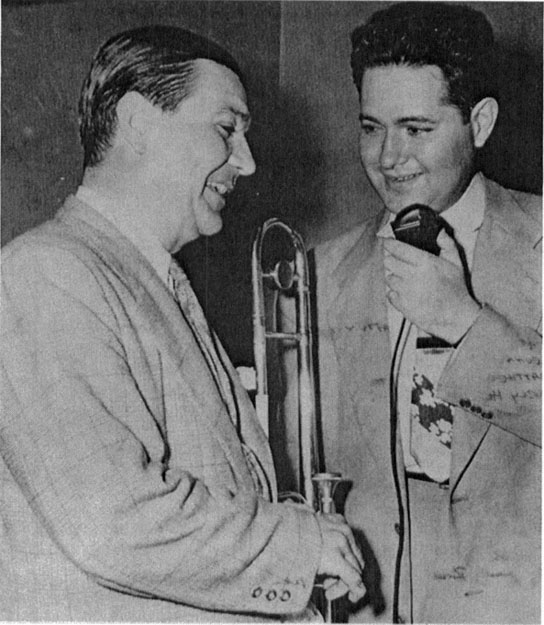
Jovial Jack Teagarden liked running a locomotive almost as much as playing the trombone (1939). Photo by Nick Alexakis.
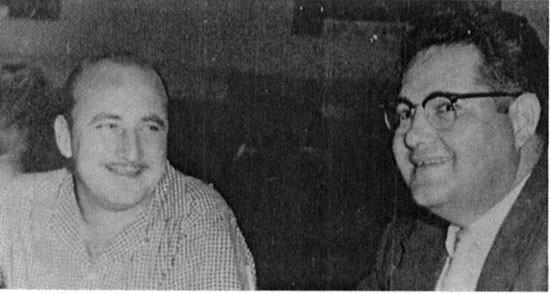
Pete Fountain before either of us wore beards. Photo by Mary Mitchell.
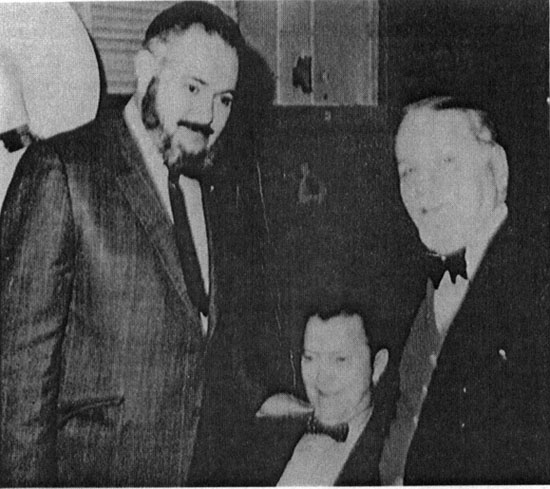
Eddie Condon, seated, and George Brunies. He sang “Everybody Loves My Baby” at Manassas, Virginia, in 1970. Photo by Harry Godwin.
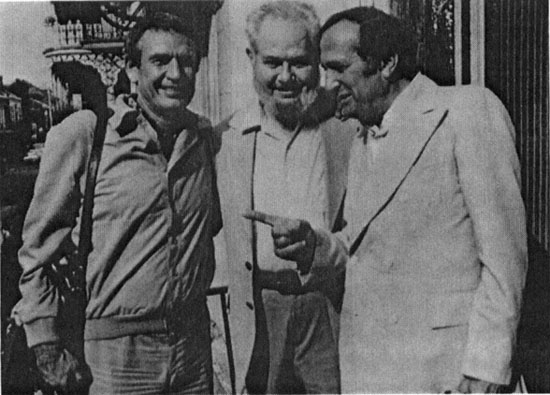
Claude Luter, Europe’s premiere jazzman, left, and Pierre Atlan, right. I never knew there were that many cabooses in New Orleans railyards. Photo by Michele Atlan.
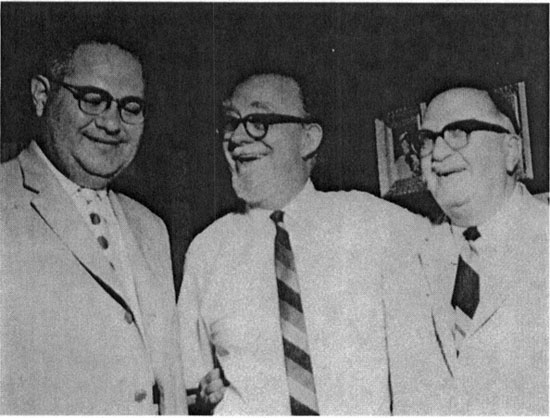
Rudi Blesh, center, ragtime guru, and edmond Souchon, right. telling me S.S. Goldenrod is sinking. If it had been, they’d already be in the life-boats. This was the St. Louis Ragtime Festival of 1966. Photo by Dr. Charles Riley.
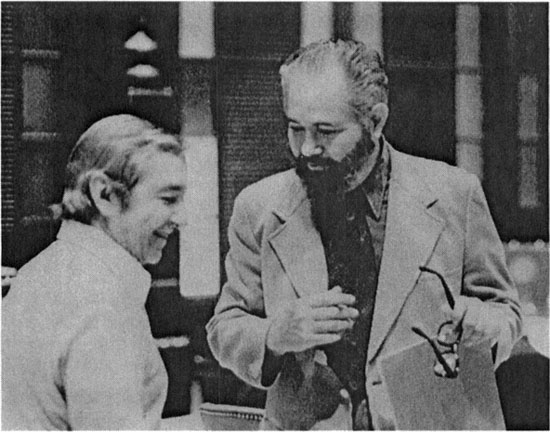
I try to explain to Eddie Miller that a saxophone isn’t a genuine musical instrument. Photo by Johnny Donnels.
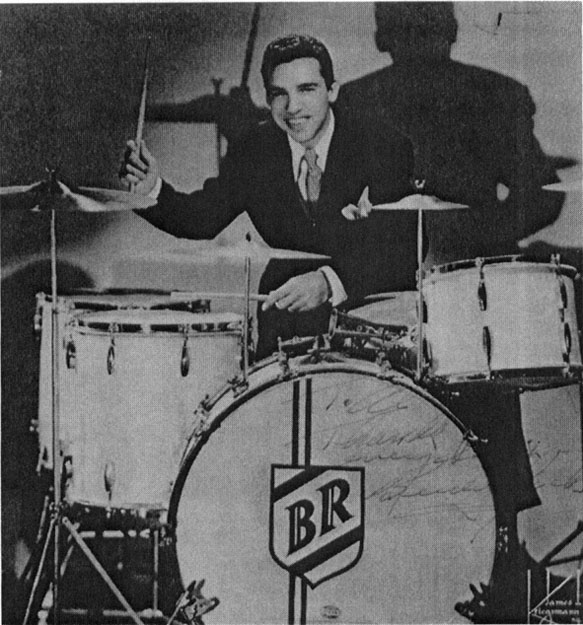
Buddy Rich played great drums even with a broken arm.
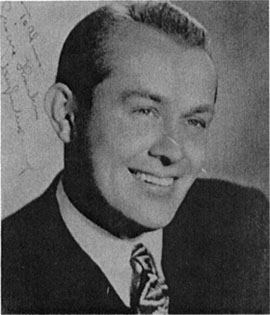
Vaughn Monroe. I arranged for him to take jazz trombone lessons from virtuoso Al Leopold, But the girls only wanted him to sing “Racing with the Moon.”
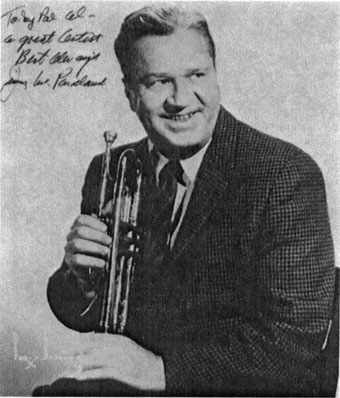
Jimmy McPartland, leader of Chicago’s famed Austin High Gang, which included Gene Krupa, Dave Tough, and Jim Lannigan. McPartland became a jazz legend in his own time when he replaced Bix in the Wolverines.
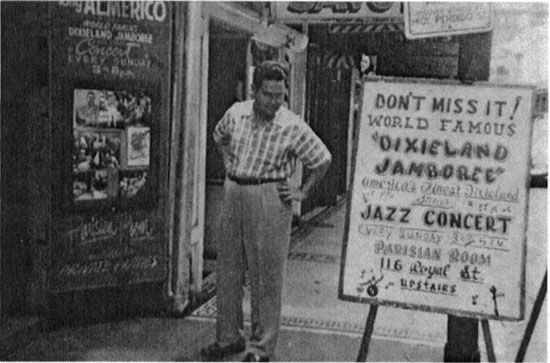
In the fifties, Almerico's Parisian Room was the place to go on a Sunday afternoon in New Orleans. But if you lived in Maine or Oregon you could hear the sounds on your radio. Photo by Mary Mitchell.
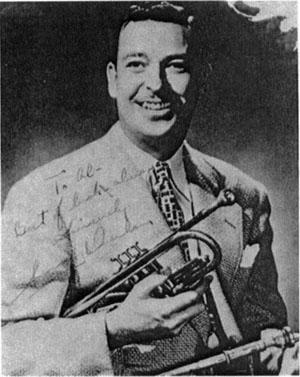
At sixteen, Sonny Dunham made the hit trumpet chorus on the Casa Loma Orchestra recording of “Memories of You.” When I introduced him to the composer, Eubie Blake, in 1940, he turned to me and asked, “Is he still alive?” Sonny was embarrassed, but Eubie told him, “I hear that all the time.”
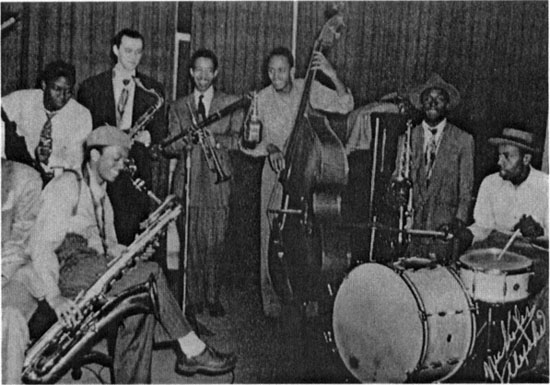
Early be-bop. I didn’t understand the music then, but I gave it a whirl anyway. After I figured it out, I knew I really hated it. Here, left to right, are vocalist Billy Scott; Jimmy Heath, baritone sax; Al Steele; unknown trumpeter; Percy Heath, later famous as organizer and bassist of the so-called Modern Jazz Quartet; Jimmy Oliver; and unknown drummer. I have fallen out of the picture on the left. Photo by Nick Alexakis.
In 1929 he recorded for Victor under the name of Johnny Hyman’s Bayou Stampers. He founded the New Orleans Jazz Club in 1949. Born July 25, 1899, he died on October 10, 1977. His musical legacy is perhaps a dozen LP’s and some distinguished original compositions, including “The Canal Street March” (the official march of the City of New Orleans), “King Zulu Parade,” “The Postman’s Lament,” “Two Wing Temple in the Sky,” and “Ultra Canal.” He assimilated the musical styles of King Oliver and Bix Beiderbecke, blending them into his own highly personal approach to his cornet. His favorite recording partners were the trombonists Tom Brown (with whom he was not on speaking terms for most of their professional careers), Emile Christian, Jack Delaney, and Paul Crawford; clarinetists Harry Shields and Raymond Burke; pianist Armand Hug; guitarists Snoozer Quinn and Danny Barker; bassist Sherwood Mangiapane; and drummer Sammy Penn. Actually, his very favorite drummer was Von Gammon, but he never recorded with him. I had the great personal privilege of producing, or otherwise contributing to, much of his recording output.
From all of this you might easily conclude that Johnny and I were also close friends, and indeed we were. I’m sure I spent more time with him than with any other musician. He would come to my place in Florida for extended visits, and in New Orleans we explored the culinary delights of low-class restaurants with much satisfaction. We’d also listen to records together a lot, which is something most jazzmen don’t do. Sometimes we’d pick up Raymond Burke for an outing. Together we’d roam New Orleans, always remarking on its unique charms and congratulating ourselves for having the good fortune and good judgment to live there. Johnny and I would also go to hear other jazz musicians perform. We might stop in at Shakey’s Pizza Parlor if Jeff Riddick was playing piano, or go up to the Esplanade Lounge of the Royal Orleans to spend an entire evening soaking up the sounds of Armand Hug. We sometimes went long distances together to attend jazz festivals, just to listen to the live tone of Wingy Mannone or the subtle ingenuity of Bobby Hackett. Wiggs, on a session, could get so lost in admiration for a fellow performer’s work that he’d forget to come in on his own chorus.
Wiggs, like no other musician, knew the proper role and function of each instrument in a jazz band. He rated musicians almost entirely on their abilities to improvise collectively in the jazz ensemble. Whatever else they did in the way of solos he felt was secondary. Since I was in complete agreement, it was inevitable that we should work on many things together.
But nobody’s perfect.
John’s main hang-up, once in the recording studio, was his fear that he was being set up too far from the microphone and that the lead wouldn’t be heard. (Of course all this took place in the years before 16-track recording apparatus.) As a result, after I had him seated where I knew the balance would be at its best, he would keep hitching his chair forward, inching closer to the microphone to make sure he’d be heard. Of course, the playback would show—even to him—that the comet was too close, so I’d move him back and we’d do it again. But the action was subconscious and happened while he was actually concentrating on what he was playing. Eventually I dealt with the problem by driving nails into the floor in front of his chair legs. He’d keep on hitching at it in an effort to move closer to the mike, but of course he stayed put.
I don’t think I ever mentioned his sweet, even disposition. That’s because he didn’t have one. He was irascible, impatient with incompetence, in or out of music, infuriated by colleagues who didn’t want to get together for rehearsals to add to their repertoires. (He failed to take note of the fact that the other fellows had to play music for a living and thus had to work most nights and many days.) There were musicians he absolutely refused to play alongside, for real or fancied reasons.
Johnny owned a substantial amount of property—enough to support himself, his wife, and his mother-in-law comfortably. It never got through to him that everyone else was not in the same position. He seemed to regard poverty as a personal idiosyncrasy. However, confronted with actual deprivation, he always felt a responsibility to do something about it. He was rabidly anticapitalist and prounion. He was a substantial contributor to any cause endorsed by Martin Luther King, whom he considered the greatest living American, an extraordinary view for a white New Orleans jazz musician.
I wrote an article about him once, entitled “Both of Johnny Wiggs,” separating the stern and remorseless music teacher, Profes- sor Hyman, from the fun-loving jazz musician. He called me on the phone when the article came out and insisted I’d used my imagination too freely. Then later in the day, he called again and said his friends had been calling him all day about it. “You bastard!” he said. “They all love it.”